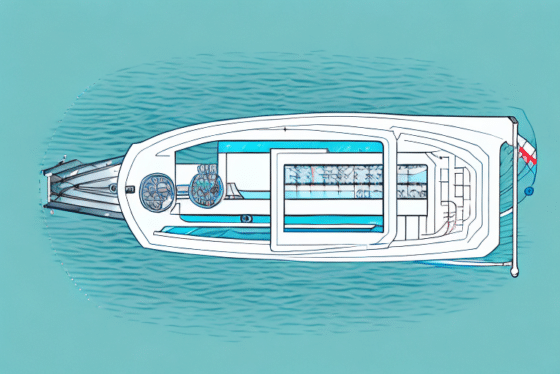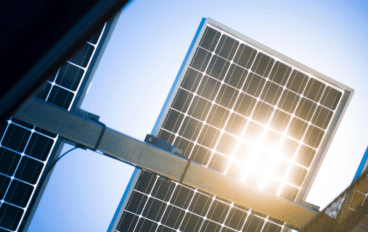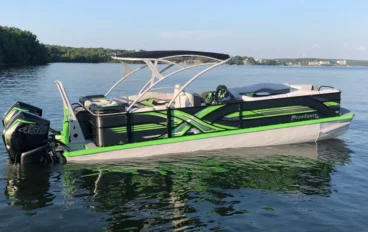
Pontoon boats are a great way to enjoy the water and spend quality time with family and friends. But just like any other boat, they rely on a battery to power various systems, including navigation lights, trolling motors, and other onboard electronics. As a pontoon boat owner, it’s important to be aware of common battery issues that can occur. In this article, we will discuss how to diagnose and troubleshoot such issues, as well as provide tips for extending battery life and understanding the basics of pontoon boat battery charging. So, let’s dive in and learn about the troubleshooting steps for pontoon boat battery problems.
Diagnosing Common Pontoon Boat Battery Issues
When your pontoon boat battery starts acting up, it’s crucial to identify the root cause of the problem. Here are some of the most common issues you may encounter:
- Weak Battery: If your battery is not providing enough power to start the engine or operate the boat’s electrical systems, it could be a sign of a weak battery.
One possible reason for a weak battery is its age. Over time, batteries naturally lose their ability to hold a charge. If your battery is several years old, it may be time to consider replacing it with a new one. Additionally, extreme temperatures can also affect the battery’s performance. If you frequently expose your pontoon boat to extreme heat or cold, it may accelerate the deterioration of the battery.
Another factor that can contribute to a weak battery is improper maintenance. Regularly checking the battery’s water level and cleaning the terminals can help prolong its life. Neglecting these maintenance tasks can lead to a decrease in the battery’s capacity and performance.
- Corroded Terminals: Corrosion on the battery terminals can prevent proper electrical connections and lead to performance issues.
Corrosion is a common problem for boat batteries, especially in marine environments where there is constant exposure to moisture and saltwater. The buildup of corrosion on the terminals can inhibit the flow of electricity and cause the battery to underperform.
To prevent corrosion, it is recommended to regularly clean the battery terminals using a mixture of baking soda and water. This solution helps neutralize the acid that causes corrosion. After cleaning, applying a layer of petroleum jelly or terminal protectant can help create a barrier against future corrosion.
- Parasitic Drains: Some pontoon boat accessories or onboard systems may draw power even when the boat is not in use, leading to a drained battery.
Parasitic drains can be a frustrating issue to deal with, as they can quickly drain the battery even when the boat is not in operation. Common culprits include onboard electronics, such as radios, fish finders, and GPS systems, as well as bilge pumps and live well aerators.
To identify and address parasitic drains, it is recommended to install a battery disconnect switch. This switch allows you to completely cut off power to the boat’s electrical systems when not in use, preventing any unnecessary power drain.
- Overcharging: Overcharging can occur if the battery is constantly connected to a charging source without proper regulation, which can damage the battery cells.
Overcharging is a serious issue that can significantly reduce the lifespan of your pontoon boat battery. It can occur when the battery is left connected to a charger for an extended period or when the charging system is faulty.
To avoid overcharging, it is important to use a charger specifically designed for marine batteries and follow the manufacturer’s instructions. Additionally, investing in a smart charger that automatically adjusts the charging rate can help prevent overcharging and extend the battery’s life.
- Bad Cell or Cells: A single bad cell or multiple bad cells can significantly impact the battery’s performance and capacity.
If your pontoon boat battery is experiencing a sudden drop in performance or capacity, it could be due to a bad cell or cells. A bad cell can occur when one or more of the battery’s individual cells fail, resulting in an imbalance that affects the overall performance of the battery.
Unfortunately, there is no easy fix for a bad cell, and the best course of action is usually to replace the entire battery. Attempting to revive a battery with a bad cell is unlikely to be successful and may lead to further damage.
Once you have identified the specific issue, you can proceed with the troubleshooting steps accordingly. Keep in mind that safety should always be a priority when handling batteries, so make sure to take necessary precautions and follow manufacturer guidelines.
Tips for Extending Pontoon Boat Battery Life
A pontoon boat battery can be a substantial investment, so it’s important to take steps to extend its lifespan. Here are some useful tips:
- Proper Charging: Follow the manufacturer’s recommendations for charging your battery and avoid overcharging or undercharging.
- Regular Maintenance: Inspect and clean the battery terminals regularly to prevent corrosion and maintain good electrical connections.
- Storage: Store the battery in a cool and dry place when not in use, and consider using a battery maintainer or tender to keep it charged during long periods of inactivity.
- Load Management: Avoid excessively draining the battery by minimizing the use of power-hungry accessories or installing a battery monitor to keep track of the power consumption.
- Proper Disposal: When it’s time to replace your battery, dispose of it responsibly according to local regulations. Many retailers offer battery recycling programs.
By following these tips, you can maximize the lifespan of your pontoon boat battery and ensure reliable performance for years to come.
Identifying the Causes of Pontoon Boat Battery Drain
Pontoon boat battery drain can be frustrating, especially when you’re ready to hit the water and your battery is dead. Here are some common causes of battery drain:
- Parasitic Drains: As mentioned earlier, certain onboard systems or accessories may draw power even when the boat is not in use. Identifying these drains and disconnecting them can prevent a drained battery.
- Faulty Wiring: Poorly installed or damaged wiring can cause electrical shorts or excessive power draw, leading to battery drain.
- Ignition Switch Issues: A faulty ignition switch can cause accessories to remain powered even when the boat is not running, draining the battery.
- Problematic Charging System: If the battery is not receiving proper charge from the boat’s charging system, it may not be able to maintain its charge, resulting in drain issues.
- Excessive Load: Using power-hungry accessories, such as powerful sound systems or excessive lighting, can drain the battery quicker.
To identify the cause of the battery drain, it’s advisable to consult a professional or refer to your boat’s manual for specific troubleshooting steps. In some cases, it may be necessary to seek professional assistance to resolve the issue.
How to Safely Disconnect and Reconnect Pontoon Boat Batteries
At times, it may be necessary to disconnect or reconnect your pontoon boat batteries for maintenance or storage purposes. Here’s a step-by-step guide for doing so safely:
- Ensure the boat is turned off and all electrical appliances are switched off.
- Wear protective gloves and eyewear to avoid any potential contact with battery acid or sparks.
- Locate the negative (-) terminal of the battery and loosen the nut or bolt holding the cable clamp in place.
- Carefully remove the negative cable clamp from the battery terminal and secure it away from the battery to prevent accidental reconnection.
- Repeat the same process for the positive (+) terminal, ensuring the cable clamps are securely disconnected.
- To reconnect, start by attaching the positive (+) cable clamp on the battery’s positive terminal and tighten the nut or bolt.
- Next, attach the negative (-) cable clamp on the battery’s negative terminal and tighten the nut or bolt.
- Double-check that both cable clamps are securely attached and ensure they are not touching each other or any metal surfaces.
- If necessary, apply a thin layer of petroleum jelly or battery terminal protectant to the terminals to prevent corrosion.
It’s always a good idea to consult your boat’s manual for specific instructions and recommendations regarding disconnecting and reconnecting your pontoon boat batteries.
Pros and Cons of Different Pontoon Boat Battery Types
There are various types of batteries available for pontoon boats, each with its own advantages and disadvantages. Let’s take a look at some common types:
- Flooded Lead-Acid Batteries: These traditional batteries are affordable and widely available. They require regular maintenance, including checking electrolyte levels and topping up the water.
- AGM (Absorbent Glass Mat) Batteries: AGM batteries are maintenance-free, spill-proof, and offer excellent vibration resistance. However, they tend to have a higher price tag compared to flooded lead-acid batteries.
- Gel Batteries: Gel batteries are also maintenance-free, spill-proof, and provide good deep-cycle capabilities. They are more expensive than flooded lead-acid batteries and require specific charging methods.
- Lithium-Ion Batteries: Lithium-ion batteries are lightweight, have a longer lifespan, and offer high energy density. However, they come with a significantly higher price and require a specific charging system.
Choosing the right battery type depends on various factors, including budget, usage requirements, and personal preferences. Consider consulting with a marine battery specialist to determine the best option for your pontoon boat.
Understanding the Basics of Pontoon Boat Battery Charging
Proper charging is essential for maintaining the health and performance of your pontoon boat battery. Here are some key aspects to keep in mind:
- Charging Method: Depending on the type of battery, you may need to use a specific charging method. Consult the battery manufacturer’s guidelines for the recommended charging method.
- Voltage Requirements: Different batteries have different voltage requirements. Ensure that the charger you use matches the voltage requirements of your specific battery.
- Charging Time: Overcharging can damage the battery, while undercharging can lead to decreased performance. Follow the recommended charging time provided by the battery manufacturer.
- Smart Chargers: Consider investing in a smart charger that monitors the battery’s condition and adjusts the charging process accordingly. This can help extend battery life and prevent overcharging or undercharging.
By understanding the basics of pontoon boat battery charging, you can ensure that your battery remains in optimal condition and provides reliable power for your boating adventures.
Troubleshooting Pontoon Boat Battery Problems: A Step-by-Step Guide
When facing battery-related issues with your pontoon boat, a systematic approach to troubleshooting can help identify and resolve the problem. Follow these steps:
- Inspect Battery Connections: Check that the battery terminals are clean, secure, and free from corrosion. Clean the terminals if necessary.
- Test Battery Voltage: Use a multimeter to measure the voltage across the battery terminals. A fully charged battery should read around 12.6 to 12.8 volts.
- Load Testing: If the voltage is low, perform a load test to determine the battery’s capacity. Consult the battery manufacturer’s guidelines for the specific load testing procedure.
- Check Charging System: Use a voltmeter to test the boat’s charging system output while the engine is running. The voltage should read between 13.8 to 14.4 volts.
- Inspect Wiring and Components: Inspect the wiring and components associated with the battery and charging system for any damage or loose connections.
- Seek Professional Help: If the issue persists or you are unsure about the troubleshooting process, it’s best to consult a professional marine technician.
Remember, proper troubleshooting requires patience and attention to detail. Following these steps can help you pinpoint the problem and take the necessary steps to resolve it.
By being aware of common pontoon boat battery issues and knowing how to diagnose and troubleshoot them, you can ensure that your boat’s power source remains reliable. Implementing proper battery maintenance, understanding the pros and cons of different battery types, and following safe disconnecting and reconnecting procedures will help maintain your battery’s longevity. With the right knowledge and precautions in place, you can enjoy worry-free boating adventures with your pontoon boat for years to come.





